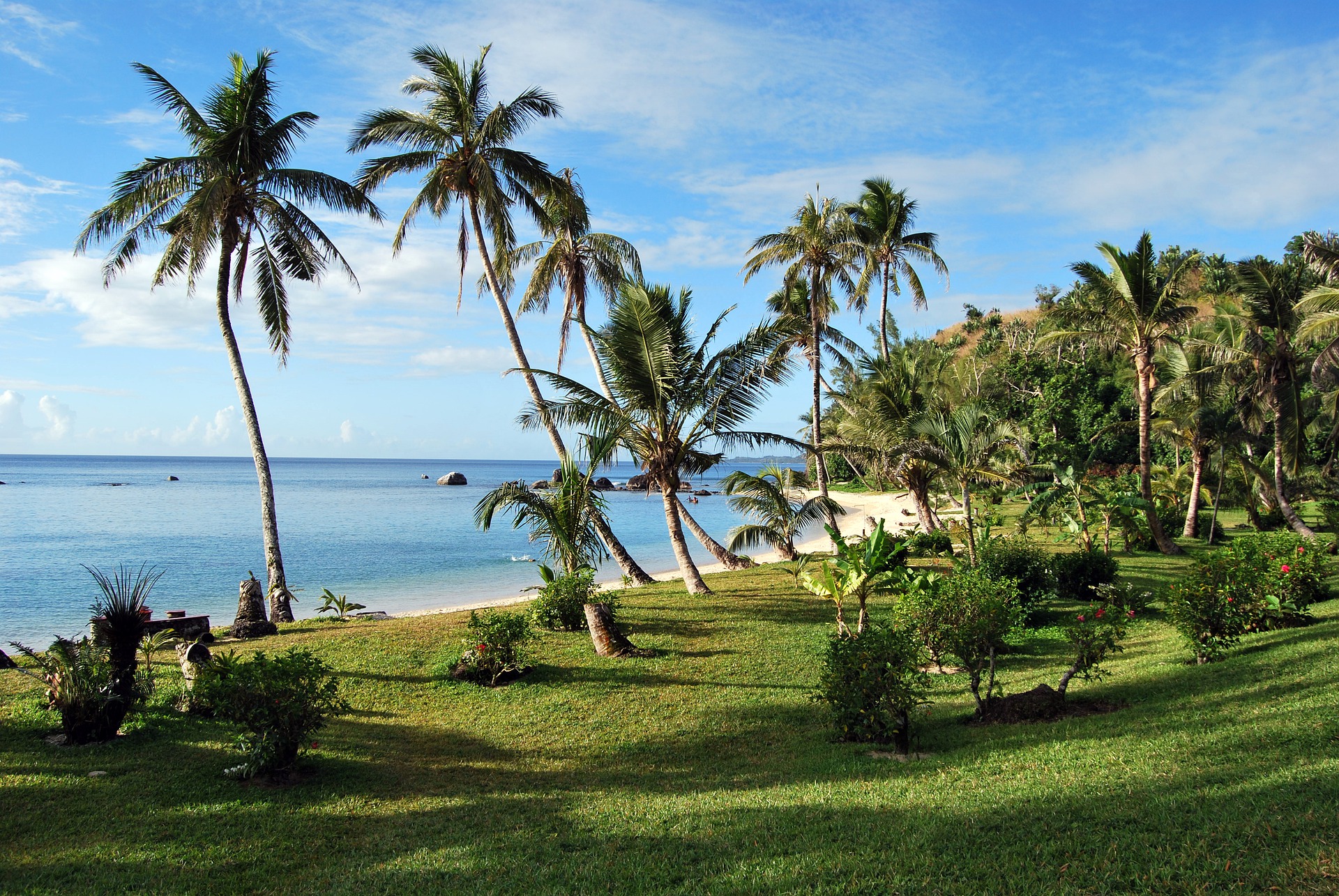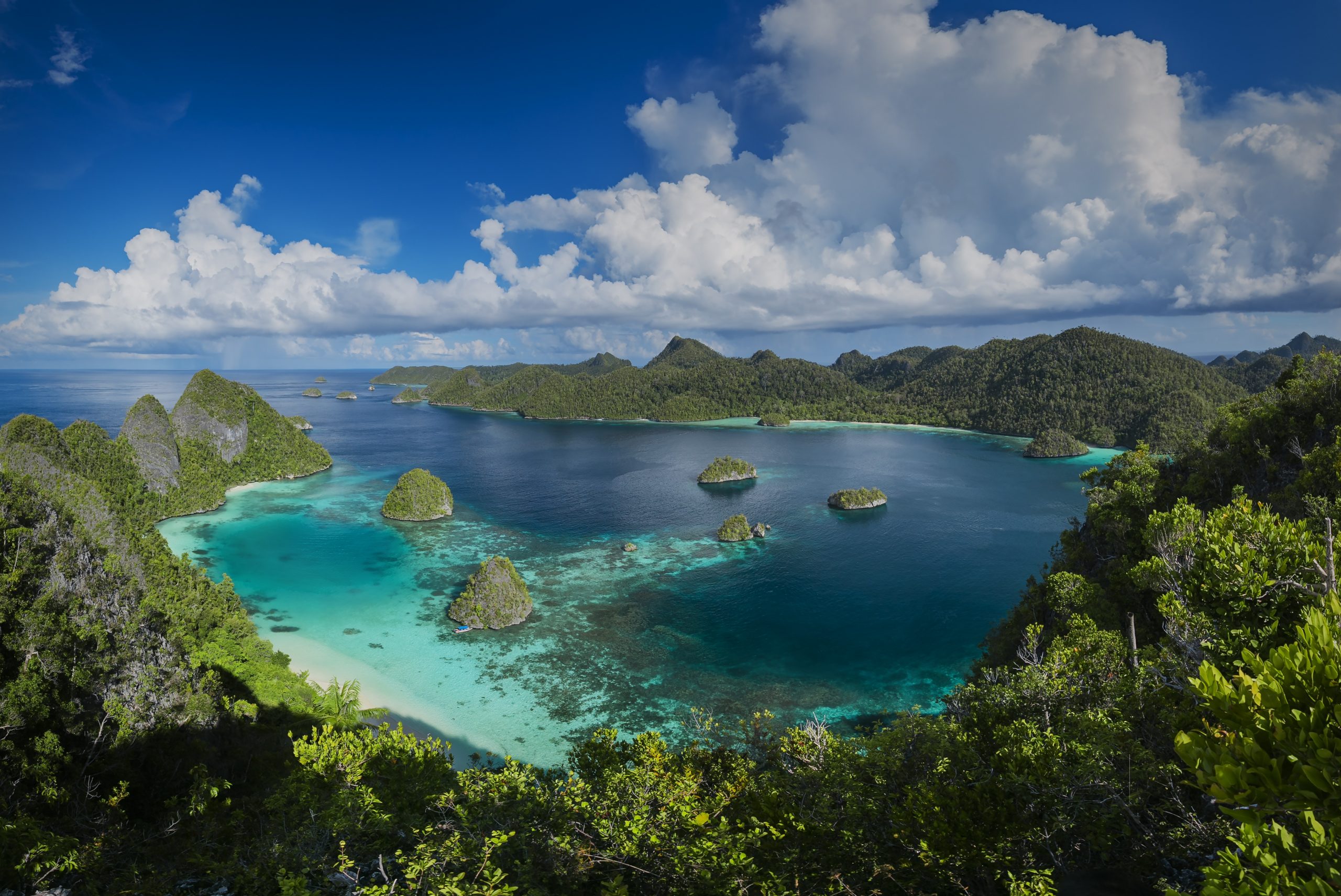Islands are subcontinental land masses that are completely encircled by sea. Islands can be found in a variety of places, sizes, and shapes. You may find a list of the top five largest islands in the world in this article. Nobody is exactly sure how many islands there are in the world because there are so many of them. Islands come in a wide variety of forms.
Continental islands are the most common type of island, and because they are situated on the continental shelf, they are somewhat above the ocean’s surface. Oceanic islands, on the other hand, are often volcanic in nature and do not lie on the continental shelf. And last but not least, there are the tropical islands, which are made of coral reefs. The top five largest islands in the world according to the land area are shown below.
5. Baffin Island

- Island Size: ~ 507,451 km²
- Ocean: Atlantic
- Country: Canada
- Capital: Iqaluit
- Population: ~ 13,148
- Location: North America
The fifth-largest island in the world, Baffin Island, is located close to Canada’s main landmass. Its land area measures 507,451 km2. The island bears the name William Baffin after the British adventurer who found it in the 17th century. As the largest island in Canada today, Baffin Island is now a part of that nation. In the vast area, however, there are just slightly more than 13,148 people. Several environmental issues confront the island, including climate change that is driving sea ice to melt and impacting wildlife populations. To address these issues and encourage sustainable development in the area, actions are being taken.
The beautiful Arctic landscapes of Baffin Island, which feature soaring mountains, fjords, glaciers, and sea ice, are well known. Polar bears, Arctic foxes, caribou, and several whale and seal species are among the many animals that call it home. Inuit culture has a long history on Baffin Island, where many communities continue to live according to their traditional traditions. The island is also home to a number of Inuit art galleries and museums that highlight the distinctive artistic heritage of the area.
The primary industries on Baffin Island include small-scale mining, tourism, and traditional hunting, fishing, and trapping. Using the island’s plentiful natural resources, which include iron ore, copper, and gold, is becoming more popular. Additionally, the tourism industry is growing, particularly in the summer when visitors may explore the island’s stunning natural surroundings and unique cultural heritage.
4. Madagascar

- Island Size: ~ 587,041 km²
- Ocean: Indian
- Country: Madagascar
- Capital: Antananarivo
- Population: ~ 26,262,313
- Location: East Africa
Madagascar is an island nation in the Indian Ocean, off the coast of South Africa. With a size of over 587,041 square kilometers, it is the fourth-largest island among the top five largest islands in the world and is inhabited by more than 26 million people. In the 13th century, Italian adventurer Marco Polo mistook the island’s shoreline for Mogadishu, the capital of modern-day Somalia on the East African continent, which was called as “Magadazo” at the time. He transliterated it incorrectly as “Madagascar,” which eventually became the island’s current name.
Madagascar is the second-largest island state in the world because it is now a part of the nation with the same name because the entire island is its property. A quarter of a billion people call Madagascar home. The cultural legacy of Madagascar combines elements from Africa, Asia, and Europe. The language and traditions of the Malagasy people are distinctive, and they also have their own music, dance, and cuisine.
Almost 90% of the plant and animal species in Madagascar’s ecosystem are unique and diversified, and they cannot be found anywhere else on Earth. Lemurs, chameleons, and a wide variety of birds, reptiles, and insects are among the island’s biodiversity. The main crops grown in the nation are rice, cassava, and other vegetables, which also form the foundation of its agricultural economy. A significant producer of vanilla and other spices is Madagascar. Other significant businesses include forestry and fishing.
In recent years, Madagascar has had a number of difficulties, including political unrest, environmental deterioration, and poverty. Yet, the nation has made strides in sectors like health and education, and interest in sustainable tourism and conservation initiatives to save the island’s distinctive biodiversity is growing.
3. Borneo

- Island Size: ~ 748,168 km²
- Ocean: Pacific
- Country: Malaysia, Indonesia, Brunei
- Capital: Nusantara
- Population: ~ 21,258,00
- Location: Southeast Asian
Among the world’s largest islands, Borneo comes in third place. The island is located in the Southeast Asian section of the Pacific Ocean and covers an area of 748,168 km2. Today, there are about 21 million people living on the island. Politically, it is divided among three nations, with Indonesia holding the majority (about 73%). 26% belong to Malaysia, and the remaining 1% is made up entirely of the island’s eponymous independent state of Brunei.
The largest of the three divisions, Kalimantan, is the name of the region of the island that belongs to Indonesia. There are more than 17 million inhabitants there, most of whom are Dayak natives. Oil, petrol, coal, and lumber are only a few examples of the natural resources on which the economy is heavily reliant.
East Malaysia, which consists of the two states of Sabah and Sarawak, is the name given to the portion of the island that belongs to Malaysia. The population of the area is diverse and includes Malays, Chinese, and several indigenous communities. The economy is primarily supported by agriculture, tourism, and the exploitation of natural resources.
The smallest piece of the island is in Brunei, which makes up only about 1% of Borneo’s total land area. It is recognized for its oil and petrol deposits, which constitute the backbone of the nation’s economy. There are roughly 460,000 people living there.
The island is renowned for its extraordinarily rich biodiversity, which includes a wide variety of plant and animal species that are unique to this planet. Borneo is home to the greatest remaining populations of orangutans, other unique and endangered wildlife, and the oldest rainforest in the world, which is said to be 140 million years old.
2. New Guinea

- Island Size: ~ 785,753 km²
- Ocean: Pacific
- Country: Papa New Guinea, Indonesia
- Capital: Port Moresby
- Population: ~ 11,306,940
- Location: Oceania
The second-largest island among the top five largest islands in the world, New Guinea, is situated north of Australia in the southwestern Pacific Ocean and has a total area of 785,753 km2. Politically, the island is divided between two nations: Papua New Guinea, an independent nation, and Indonesia, which controls the western half of the island. On the whole, the island is home to more than 11 million people with 850 or more different languages being spoken. It has one of the most varied and fascinating histories of indigenous peoples, colonialism, and independence, making it one of the most culturally diversified nations in the world.
Agriculture makes up the majority of Papua New Guinea’s economy; the primary cash crops are palm oil, coffee, and cocoa. A significant industry is mining, particularly for gold, copper, and silver. The nation has enormous hydroelectric power potential and is endowed with a wealth of natural resources, including oil and gas.
When Spanish explorers first came to the island in the 16th century, they gave it its name. They named the island Nueva Guinea, sometimes known as New Guinea, since they noticed many parallels between the island’s original black inhabitants and the people of Guinea in Africa. In terms of politics, New Guinea is currently split almost exactly down the middle: the western half belongs to Indonesia, and the eastern half to Papua New Guinea, an independent nation.
1. Greenland

- Island Size: ~ 2,130,800 km²
- Ocean: Atlantic
- Country: Denmark
- Capital: Nuuk
- Population: ~ 56,081
- Location: North America
The world’s largest island is Greenland. Greenland crosses both the Arctic and the Atlantic Oceans with a land area of 2,130,800 km2. Although Greenland is in North America and is generally independent, it actually belongs to the Kingdom of Denmark. Despite the island’s enormous size, just about 56,081 people call it home. With a population of about 18,000, Nuuk is both the country’s capital and largest city. The only permanent ice sheet outside of Antarctica covers over 80% of the island.
Almost 90% of Greenland’s exports come from fishing, which is a major component of the economy. Also, the nation contains sizeable mineral reserves, including iron ore, zinc, gold, and rare earth elements, all of which are being explored and developed more and more. During the summer, when the country’s breathtaking vistas are visited by tourists attracted by the midnight sun, tourism is a significant sector of the economy.
In the Kingdom of Denmark, Greenland is an independent area with a special political position. This indicates that while it has a separate executive branch and legislature, the Danish government continues to be in charge of matters of national security and foreign policy, respectively. After discovering the island in the tenth century, the Vikings gave it their name. because Greenland was greener back then, and because settlements there started in the summer. The Viking Erik the Red, who was born in Norway, might have chosen the moniker in order to draw more people to the island.
The top five largest islands in the world are immensely diverse and abundant in terms of their natural resources, culture, and history. Every island has a different topography and set of habitats, from the frigid tundra of Greenland to the tropical rainforests of Borneo and Madagascar. Millions of people live on these islands, each with their own customs, dialects, and lifestyles. They also support a large number of plant and animal species, many of which are unique to these regions.
These islands face a variety of similar problems, such as environmental deterioration, climate change, and economic growth, despite their many variances. These regions are working to solve these issues and advance sustainable development while maintaining their distinctive cultures and natural resources for upcoming generations. The top five largest islands in the world, taken collectively, exhibit an astounding variety of human and natural environments and provide a window into the extraordinary complexity and richness of our planet.















